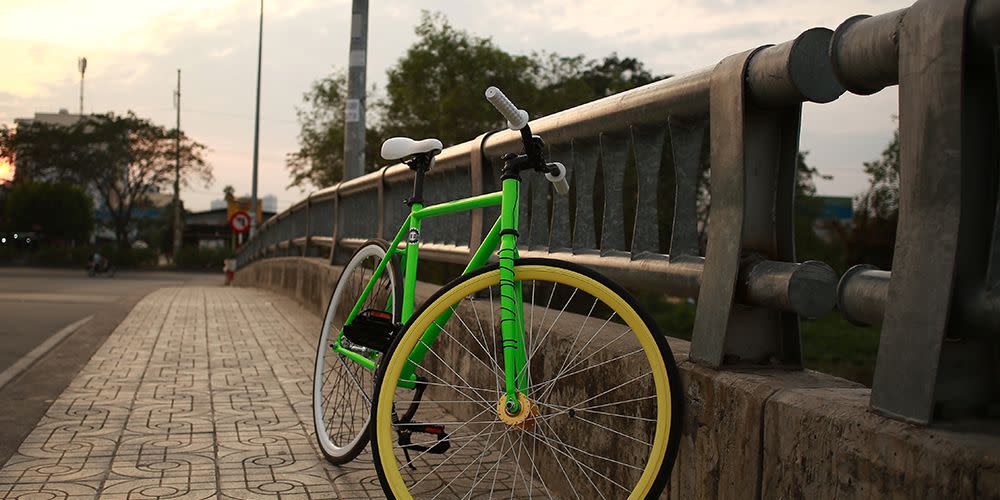Why I Ride a Fixed-Gear Bike

A fixed-gear bike, or fixie, is a type of singlespeed bicycle that doesn’t allow the rider to coast. When the bike rolls, the pedals rotate, and if the bike doesn’t have brakes—like mine—the only way to slow down is to resist the forward motion of the pedals, similar to downshifting in a car.
RELATED: What It’s Like to Cross the Alps on a Fixie
Adopted by a band of kamikaze bike messengers in New York City and San Francisco in the 1970s, fixies and track bikes have become nauseatingly popular among young, hip urbanites. (They can also be quite popular among the skateboarding crowd.) Beyond aesthetics, the appeal of these minimalist machines is the statement made by riding one: It’s an act of rebellion. Or, as the author and cycling-culture guru Lodovico Pignatti Morano put it, “a suicidal response to urban conditioning.”
But despite what the hipsters might want you to think, riding a brakeless fixed-gear isn’t so crazy. With some practice, it’s surprisingly easy to scrub speed or even force the rear wheel into a skid. A fixed-gear has at least as much stopping power as a beach cruiser with a coaster brake. Direct feedback from the pedals allows for quick and precise speed adjustments, which are crucial for riding in busy traffic (especially if you don’t always keep both hands on the bars). It’s impossible to lock up the rear wheel inadvertently since that would require stopping the pedals, so it’s easier to gauge traction on wet streets.
There are other benefits. A fixed-gear has fewer parts to purchase and to maintain. It’s easy to balance in place without putting a foot on the ground; just turn the front wheel sideways and rock the pedals forward or backward to keep upright (this is called a trackstand). Fixies can even go backward, so if a lane of traffic closes, just reverse and try a different path though a maze of stopped cars.
Then there’s the security: A fixie has fewer parts to steal. And before fixed-gears became ubiquitous, an unsuspecting thief probably wouldn’t make it to the end of the block without crashing.
But the best reason to ride a fixed-gear is the experience. It’s the intimate connection between rider and bike, as difficult to articulate as the pleasure of driving a car with a manual transmission instead of an automatic, but just as real. Since decelerating requires effort, the rider learns to negotiate obstacles not by altering speed but by altering direction. Rather than robotically plodding along in a straight line, the pedaler weaves and bobs spontaneously across the road.
This soulful, flowing style of riding has been compared to surfing. Sometimes it’s a drag not to be able to coast, change gears, and stop pedaling to bunny-hopa curb. But that’s what the other bikes in my quiver are for. Practical or impractical, hip or outdated, riding a fixed-gear is just fun.
You Might Also Like

